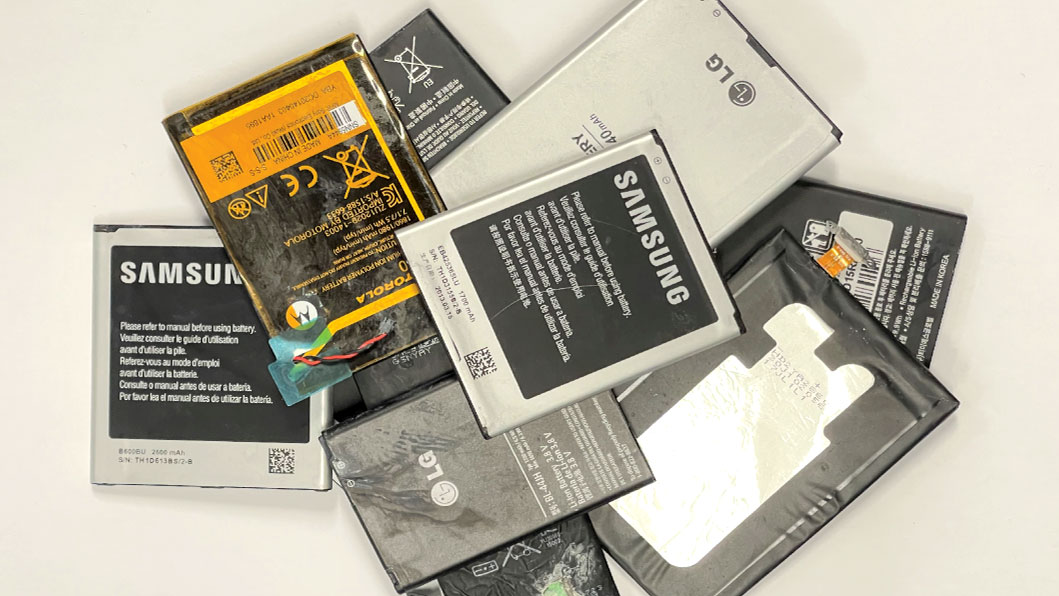Chinese researchers develop method to revive lithium batteries that significantly extends their lifespan
The process includes injecting fresh lithium into batteries to give them a prolonged life

Researchers from Fudan University in China have developed a method to refresh and extend the lifespan of lithium batteries, a breakthrough that could improve battery sustainability and reduce electronic waste. The findings, recently published at Nature, are based on a technique that rejuvenates degraded lithium-ion cells, potentially increasing their usability for long periods.
As we know, lithium-ion batteries power everything from smartphones and laptops to electric vehicles, but their efficiency declines over time due to electrode degradation and chemical side reactions. The research led by Peng Huisheng and Gao Yue from Fudan University, along with other collaborating Chinese research institutions, began by identifying and synthesizing a lithium carrier molecule - lithium trifluoromethanesulfinate (LiSO₂CF₃). The researchers described the white powdered functional salt as a "precise-treatment medicine for lithium-ion batteries."
Over time, lithium-ion batteries lose efficiency as lithium becomes trapped in inactive compounds and electrode materials degrade. The new method involves introducing an electrolyte solution containing dissolved LiSO₂CF₃ into a degraded battery. When a voltage is applied, the compound breaks down, releasing lithium ions that reintegrate into the electrode material, effectively restoring lost capacity.
Simultaneously, the breakdown process generates gaseous byproducts, including sulfur dioxide (SO₂), trifluoromethane (HCF₃), and hexafluoroethane (C₂F₆), which naturally escape from the electrolyte if the battery is designed to allow venting.
Extending lifespan from 1,500 to 12,000 charge cycles
Once the lithium restoration is complete, the battery is sealed and tested to confirm its performance. Early experiments have shown that lithium-iron phosphate batteries treated with this method can regain nearly all of their lost capacity, extending their lifespan up to 12,000 charge cycles. For comparison, a typical electric car battery has a lifespan of around 1,500 charge cycles.
According to Gao Yue, “The battery only lost 4% of its performance after 11,818 cycles. For an EV that charges twice a day, this means the battery could last up to 18 years. In comparison, current EV batteries usually lose 30% of their performance in just 2.7 years with the same charging routine.”
However, practical implementation requires that batteries be designed with electrolyte replenishment and gas venting in mind, which may limit the new technology's feasibility for widely used consumer electronics. While still in the experimental stage, this process presents a promising approach to reducing battery waste and increasing the longevity of rechargeable lithium-ion cells, particularly in large-scale energy storage systems.
The breakthrough not only has the potential to extend battery lifespans and reduce e-waste, but it can also lower the environmental impact of lithium mining. More testing and regulatory approvals will be needed before this method can be implemented widely, but it seems to be a promising step toward a more sustainable battery industry.
Get Tom's Hardware's best news and in-depth reviews, straight to your inbox.

Kunal Khullar is a contributing writer at Tom’s Hardware. He is a long time technology journalist and reviewer specializing in PC components and peripherals, and welcomes any and every question around building a PC.
-
bolweval Wow, this is very practical for the electric car industry, not so much for laptops and cell phones, I wouldn't want them venting gasses into my house..Reply -
Shiznizzle Reply
Have any PTFE pans? Plastic cooking utensils? Anything plastic in your house? They all release gasses and in the case of teflon you actually ingest stuff i put on my bike chain to lube it.bolweval said:Wow, this is very practical for the electric car industry, not so much for laptops and cell phones, I wouldn't want them venting gasses into my house..
Just in case you thought that keeping your windows closed might keep the pollution out, i am going to have to disappoint you. It wont. -
bit_user Reply
Depends on the chemistry of the specific gasses and their rate of release. Most manufactured items you buy already release gasses (so-called effluent) into your immediate environment. Not just electronics, but even furniture, carpets, flooring, shower curtains, etc.bolweval said:Wow, this is very practical for the electric car industry, not so much for laptops and cell phones, I wouldn't want them venting gasses into my house..
You can quite easily smell this, when you open a box containing a new graphics card or motherboard, for instance. Heh, I still remember the smell of my NES gaming console, as it was my first electronics purchase and I never previously had that experience.
Anyway, the specifics matter. If someone trustworthy deemed it safe (the EU is pretty reliable, on these matters), I'd be okay with it. -
Alvar "Miles" Udell This is one method, among others. Solid state batteries, however, should take over before any of these designs.Reply -
bill001g Not something that I suspect would every be safe enough to allow a home user to do. You already see enough people start fires trying to replace complete lithium cells in a battery pack even when they are being careful. Messing around with the liquid inside the cells is just asking for trouble.Reply -
NinoPino Reply
This procedure need new type of batteries.A Stoner said:Yeah, those firebombs are not dangerous enough. -
NinoPino Reply
The "regeneration" will be performed in laboratories, not at home.bolweval said:I wouldn't want them venting gasses into my house.. -
Steve Nord_ Fudan at least has new rebuilds of Pet Sematery where instead of 'soured' pet souls they get revived batteries that do voltage brownout sidechannel attacks.Reply -
nameless0ne If at all possible, this technique might only be implementable in grid storage batteries. Meaning not even cars would get these. Likely only huge single cell batteries could benefit.Reply
This tech only addresses Lithium ion loss. There are many more processes that degrade batteries (dendrites and such). A combination of technologies would be needed to address the others.